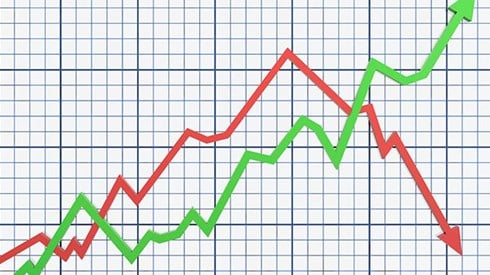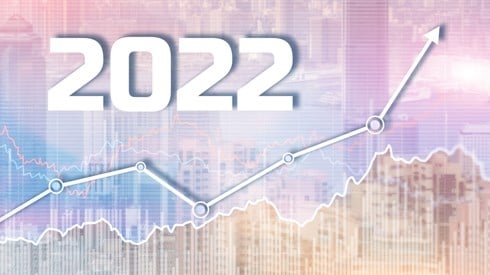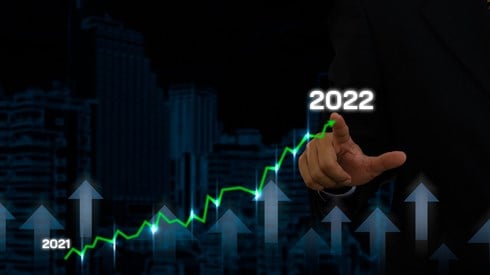Insurance Prices Increased for 18th Consecutive Quarter in Q1

May 04, 2022

The rate of commercial insurance price increases declined for the 5th consecutive quarter during the first 3 months of 2022, though the quarter also was the 18th consecutive one of composite price increases, according to a new report from Marsh.
According to the latest Marsh Global Insurance Market Index (April 27, 2022), global commercial insurance prices increased 11 percent during this year's first quarter. Price increases peaked at 22 percent in the fourth quarter of 2020, Marsh reports.
The string of consecutive quarters seeing price increases was the longest since Marsh began the Marsh Global Insurance Market Index in 2012, the broker says.
Slower rates of increase in financial and professional lines contributed to moderating rates in most regions of the world, the report says. Still, increases for financial and professional lines continue to outpace those for property and casualty lines, Marsh says, driven largely by pricing for cyber insurance.
Financial and professional lines averaged 26 percent increases during this year's first quarter, according to the report, with property insurance increasing 7 percent and casualty lines increasing 4 percent. Meanwhile, cyber-insurance prices increased 110 percent in the United States and 102 percent in the United Kingdom during the first quarter, Marsh says.
By region, composite commercial insurance prices increased 12 percent in the United States, 20 percent in the United Kingdom, 6 percent in Continental Europe, 6 percent in Latin America and the Caribbean, 3 percent in Asia, and 10 percent in the Pacific region, the Marsh report says.
In the United States, first-quarter property insurance pricing increases stayed constant from the fourth quarter of 2021 at 7 percent, the report says.
Marsh says that US clients with significant losses or those that were poor risks or had significant exposures to secondary perils such as wildfires, convective storms, and rainfall-driven flooding generally saw first-quarter property rate increases that were well above average.
The report says that underwriters continued to scrutinize contingent time element coverage during the first quarter, especially for unnamed suppliers. Insurers also continued to take a strict approach to terms and conditions, Marsh says, including deductibles, non-physical damage cyber, communicable disease exclusions, and time element exclusions.
Marsh reports that insurers significantly reduced capacity for secondary catastrophe perils as they managed their line sizes and tightened prices. Those moves have had a negative impact on wildfire-exposed insurance buyers, the report says.
US buyers with no losses, good risk quality, and in industries insurers consider desirable continued to see surplus property insurance capacity, however, according to the Marsh report. That helped reduce the impact of price increases and deterioration of policy terms for those buyers, the broker says.
Property valuation has become a major focus for insurers at renewal, Marsh says, particularly given the current inflationary environment, supply chain challenges, and labor shortages.
On the US casualty side, pricing increased 4 percent during the first quarter, Marsh reports, also in line with the prior quarter, though excluding workers compensation casualty insurance prices increased 6 percent during the quarter.
Marsh says that insurers were willing to negotiate on US buyers' auto liability and general liability rates during the first quarter in order to gain access to those buyers' more profitable workers compensation coverage.
US buyers also saw first-quarter excess liability price increases that were fairly constant with the prior quarter's at 10 percent, Marsh says.
US directors and officers (D&O) insurance buyers saw price increases decrease during the first quarter, to 3 percent from 6 percent during the fourth quarter of 2021, Marsh says. The broker says the quarter saw insurers moving down large D&O coverage towers to lower coverage levels by quoting primary layers and first or second layers.
The first quarter's 110 percent increase in cyber-insurance pricing was largely due to insurers' re-pricing and re-underwriting cyber risks, Marsh says. Increased cyber claims frequency and severity contributed significantly to price increases, the report says.
The Marsh report says that more than 60 percent of the broker's US clients took higher cyber-insurance retentions during the first quarter to help offset the impact of premium increases. Meanwhile, insurers' cyber underwriting continued to focus on buyers' risk control environments and their cyber-security maturity, Marsh says. The Russia-Ukraine war increased insurers' concerns about systemic cyber exposures and accumulations of cyber risks.
Among other coverage lines, financial institutions insurance prices increased 29 percent in the United States during the first quarter, the report says, while errors and omissions (E&O) prices increased 73 percent, though excluding cyber, US E&O prices increased 12 percent during the quarter.
In the United Kingdom, increases in all major coverage lines decreased during this year's first quarter, to 20 percent from 22 percent during the prior quarter, according to Marsh. UK property insurance increased 9 percent during the first quarter, down from 10 percent a quarter earlier, while casualty insurance prices increased 3 percent, down from 4 percent in the prior quarter.
The quarter's 102 percent increase in UK cyber-insurance pricing was driven by ransomware claims, Marsh says. As the cyber market deteriorated and insurers reduced capacity, many UK clients looked to self-insured retentions and coinsurance, Marsh says.
In Continental Europe, first-quarter property insurance prices increased 6 percent, down from 10 percent during the fourth quarter of 2021, Marsh reports. Meanwhile, casualty insurance prices increased 6 percent, down from 7 percent a quarter earlier.
An 80 percent increase in first-quarter cyber-insurance rates in Continental Europe was driven by capacity reductions and ransomware concerns, Marsh says. Concerns about systemic exposures and risk accumulations led to insurer caution in deploying cyber capacity and risk selection, as well as requiring more information from buyers. Given the current nature of the cyber-insurance market, clients in Continental Europe continued to look to captive insurance to address retentions, Marsh says.
May 04, 2022





